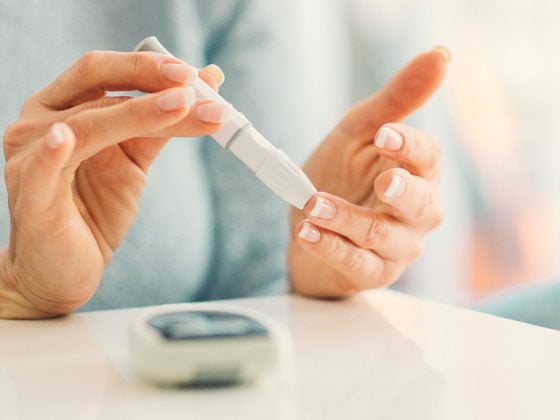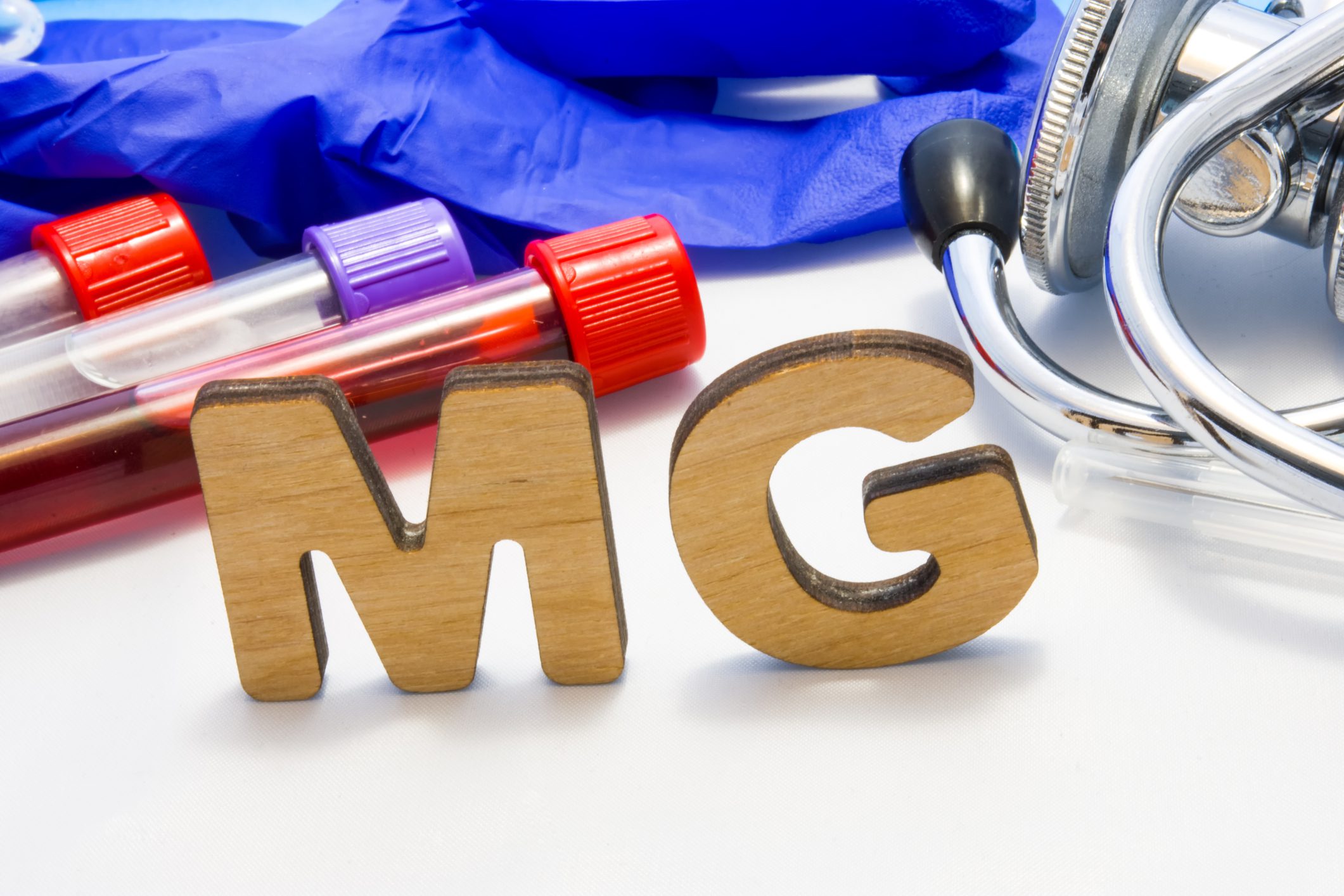Gastroesophageal reflux disease (GERD) affects approximately 10-20% of all people in Western industrialized countries [1]. The use of alginate as an alternative or add-on to proton pump inhibitors (PPIs) for GERD was the focus of the April 18, 2021, industry symposium “The Many Faces of Reflux Therapy” at the annual digital meeting of the German Society of Internal Medicine (DGIM).
Professor Dr. Joachim Labenz (Diakonie-Klinikum Jung-Stilling, Siegen) started with an overview of the complex clinical picture of “reflux” and the need for individualized therapies [2,3]. Because PPIs only treat acid reflux, they can often only provide inadequate symptom control [4,5]. Depending on the type of reflux, alternatives such as alginates can be used for symptom control and mucosal protection [4]. PPI therapy was mandatory only in reflux patients with severe esophagitis, peptic stricture, or Barrett’s esophagus at high risk of dys/neoplasia [6]. In case of alarm symptoms, conspicuous family history and after four to eight weeks of PPI therapy, the findings should be clarified endoscopically [3,7]. “Because not everyone with GERD has typical reflux symptoms and not everyone with reflux symptoms has GERD,” Labenz said [8-10].
Symptomatic management instead of overtherapy
Alternatives such as alginates are recommended for lower-risk patients [8]. In the case of acid reflux due to postprandial pressure increase on the acid pocket, these would be an option as they form a physical protective layer [11,12]. Alginates are also suitable for non-erosive reflux disease (NERD) and general reflux symptoms [13,14]. “To avoid overtreatment, long-term medication management should be based on symptoms,” Labenz explained. If symptom control is sufficient, alginate is sufficient and is also suitable as an alternative to PPI or as an add-on for reflux-related sleep disorders [15-17]. GERD therapy with alginates has been proven over decades and its efficacy has been demonstrated by various randomized clinical trials [18-20].
Safe even for pregnant women
Appropriate considerations in pregnant patients are important, he said. “Step-up management should take place here: General measures form the basis of this pyramid. If symptom control is insufficient, treatment with an antacid, alginate or sucralfate may then be recommended. Only in case of failure can H2 receptor antagonists be used, as well as PPI as a last option,” Labenz guided through the diagram. Alginate was also efficient in pregnant women in combination with antacids, safe and showed no effect on serum sodium levels [21].
The PPI-refractory patient
Professor Dr. Ahmed Madisch (KRH Klinikum Siloah, Hannover, Germany) provided an overview of treatment failure under PPI [22,23]. The cause could be misdiagnosis, nonacid reflux, an underlying functional disorder, or problems with the acid pocket [24]. The latter manifestation possibility was the most important cause of PPI-refractory reflux symptoms in GERD [25]. “PPIs are the therapy of choice for GERD, but there is a relevant therapeutic gap here,” Madisch said. Alginates are an evidenced-based add-on therapy option for reflux symptoms and persistent postprandial residual symptoms on PPI [16,22,26].
PPI step-off: learning from practice
Professor Dr. Martin Storr (Center for Endoscopy, Starnberg, Germany) addressed the overly frequent off-label prescribing of PPIs, the continuation of time-limited therapies, and the increasing prescribing pressure [27]. Using the example of a patient, he showed that PPIs are not always the first choice: In the case of the overweight smoker with an oesophago-gastro-duodenoscopy without findings, constipation or irritable stomach would be possible diagnoses in addition to GERD. “Where possible, long-term use of PPIs should be avoided,” Storr said. However, the step-off from PPI therapy is not always easy – especially if it was not necessary in the first place. Due to a habituation effect, acid-associated complaints also appeared in healthy individuals after discontinuation of a PPI [28,29]. An educational discussion with patients and consideration of whether to taper off the PPI is essential, he said. A simple method in which the patient receives alginate to get over this rebound is possible, he said. One could also slowly decrease the PPI dose or offer the patient a standardized tapering regimen. Individual schemes have to be offered for different people, he said. “I’ve gotten into the habit of offering all patients a disengagement bypass.”
The presentations of the DGIM Symposium including the concluding panel discussion are still available on demand until DGIM 2022 (April 30 to May 3, 2022): https://dgim.meta-dcr.com/kongress2021/events/2021-04-18-13-00-die-vielen-gesichter-der-refluxtherapie-fragen-und-antworten
Literature:
2 Vakil N et al. Am J Gastroenterol. 2006;101(8):1900-20.
3 Koop H et al. S2l guideline. 021/013 Gastroesophageal reflux disease. 2014.
4 Labenz J. Zentralbl Chir. 2021;146(2):176.
5 Katzka DA et al. Clin Gastroenterol Hepatol. 2020;18(4):767-76.
6 Jankowski J et al. Lancet. 2018;392(10145):400-8.
7 Gyawali CP et al. Good. 2018;67:1351-72.
8 Kulig M et al. J Epidemiol. 2004;57(6):580-9.
9 Weijenborg PW et al. Neurogastroenterol Motil. 2012;24(8):747-57.
10 Vaezi MF et al. Gastroenterology. 2018;154(2):289-301.
11 Clarke AT et al. Good. 2008;57(3):292-7.
12 Koop H et al. Gastroenterology up2date. 2018;14(1):67-84.
13 Chiu CT et al. Aliment Pharmacol Ther. 2013;38(9):1054-64.
14 Pouchain D et al. BMC Gastroenterol. 2012;12:18.
15 Deraman MA et al. Aliment Pharmacol Ther. 2020;51(119):1014-21.
16 Reimer C et al. Aliment Pharmacol Ther. 2016;43(8):899-909.
17 Müller M et al. Dtsch Med Wochenschr. 2019;144(4):30-5.
18 Labenz J et al. Dtsch Med Wochenschr. 2017;142(5):356-6.
19 Sauter M et al. Z Gastroenterol. 2018 ;56(10):1276-82.
20 Sonmez S et al. Aliment Pharmacol Ther. 2020;52(3):442-8.
21 Strugala V et al. ISRN Obstetrics & Gynecology. 2012:481870.
22 Gyawali CP et al. Gastronterology. 2018;154(2):302-18.
23 Labenz J et al. MMW Fortschr Med. 2016;158(Suppl 4):7-11.
24 Kharilas PJ et al. Neurogastroenterol Motil. 2015;27(2):160-74.
25 Boeckxstaens G et al. Good. 2014;63(7):1185-93.
26 Manabe N et al. Dis Esophag. 2012;25(5):373-80.
27 Mössner J. Prescription Drug Report. 2017:539-61.
28 Niklasson A et al. Am J Gastroenterol. 2010;105(7):1531-7.
29 Reimer C et al. Gastroenterology. 2009;137(1):80-7.
Source: Press release, Press office Gaviscon, c/o ISGRO Gesundheitskommunikation GmbH & Co. KG, Sophienstrasse 17, 68165 Mannheim, Germany
Contribution online since 25.05.2021












